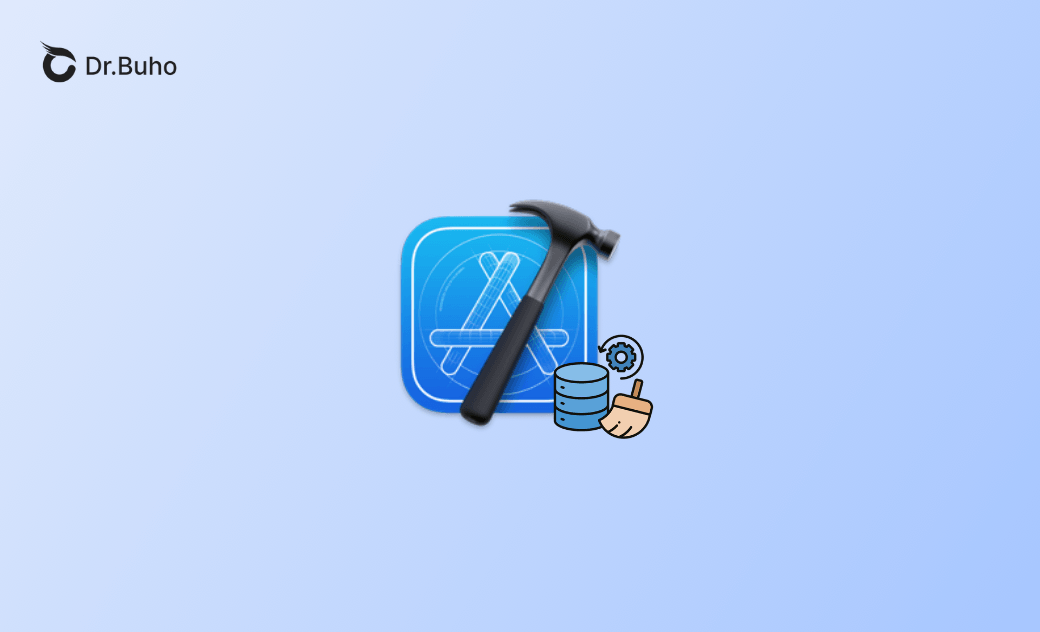- Clear Application Cache
- Clear Browser Cache
- Clear Temporary Files
What Are Xcode Caches and Can I Delete Them?
When you encounter issues with Xcode, clearing its generated caches might help. Wondering what Xcode caches are and how to clear them? Read this blog post to find out.
If you’re an iOS or macOS developer, you’ve likely encountered some performance issues with Xcode. Whether it's slow build times, unexplained errors, or even crashes, these problems can be frustrating and time-consuming. One common solution that can help is to clear Xcode cache files. But what are these caches, and is it safe to delete them? In this article, we’ll cover everything you need to know about Xcode caches, including how to clear Xcode cache automatically and manually.
What Are Xcode Caches?
Xcode caches are temporary files created by Xcode when you build or run your iOS or macOS projects. These files are designed to make your subsequent builds faster by reusing certain data, like compiled code and debugging information.
However, over time, these cache files can accumulate and take up significant space on your Mac, potentially leading to issues like:
- Slower build times
- "Module not found" errors
- Duplicate symbol errors
- Lagging performance in the Xcode IDE
- Outdated data being used instead of the most recent changes
When these problems arise, many developers wonder if Xcode caches are safe to delete and how to do it correctly.
Can I Delete Xcode Caches from My Mac?
Yes, you can delete Xcode caches from your Mac, and in many cases, it’s recommended to do so. Removing these cache files can solve common issues, like build errors or outdated project data, and help improve the overall performance of Xcode. However, keep in mind that after you clear the Xcode cache, Xcode may need to rebuild some of these files the next time you run your project, which might slightly increase the initial build time.
So, how can you clear the Xcode cache on your Mac? Keep reading.
How to Automatically Clear Xcode Cache on Mac with BuhoCleaner
If you're looking for a quick and hassle-free way to clear your Xcode cache, the professional cleaning tool BuhoCleaner is your best option. BuhoCleaner is a user-friendly Mac cleaner that can safely and efficiently remove Xcode caches, along with other junk files on your system.
Here's how to use BuhoCleaner to clear the Xcode cache on Mac:
- Download and install BuhoCleaner on your Mac.
- Launch BuhoCleaner and click the Scan button to run a quick scan.
- Click the "View Details" button on the results page, then click "Xcode Junk".
- Select the files you no longer need and click the "Remove" button.
How to Manually Delete Xcode Cache from Mac
If you prefer to handle things manually, you can delete Xcode cache files directly from your Mac using a few simple steps. Here’s how:
Step 1: Clear Build Cache in Xcode
- Open Xcode and go to your project.
- Press Command + Shift + K to clean up your build folder.
- Alternatively, you can press Command + Shift + Option + K to perform a more thorough clean, which can help resolve deeper cache-related issues.
Step 2: Delete Derived Data
Xcode stores a lot of cache files in the Derived Data folder. You can manually delete these files to clear the Xcode cache:
- Open Finder.
- Navigate to the following folder:
~/Library/Developer/Xcode/DerivedData. - Select all the folders inside and delete them.
This step helps remove leftover files from previous builds, which can often solve problems like “Module not found” errors.
Step 3: Remove iOS and macOS Simulators
If you have been testing different versions of iOS or macOS, you may have multiple simulators taking up space on your Mac. Here’s how to clear simulator cache data:
- In Finder, go to
~/Library/Developer/CoreSimulator/Devices/. - Delete the simulators that you no longer need.
Step 4: Delete Unused dSYM and Archive Files
Xcode generates dSYM files and archives that are used for debugging and distributing apps. However, old versions of these files can be safely removed:
- Go to the following folder in Finder:
~/Library/Developer/Xcode/Archives. - Delete any old archives you no longer need.
Step 5: Remove Documentation Cache
If you only develop iOS apps, you can delete some of the macOS development documentation cache to save space.
- Go to
~/Library/Developer/Xcode/DocumentationCache. - Delete unnecessary files.
Conclusion
Xcode caches are temporary files that can speed up your builds but can become a source of errors and slowdowns over time. Clearing them will help address Xcode issues and free up storage space on your Mac. If you're concerned about deleting files by mistake, consider using BuhoCleaner to do the job for you.
Hope this article helps.
Clare Phang has been captivated by the world of Apple products since the launch of the iconic iPhone in 2007. With a wealth of experience, Clare is your go-to source for iPhone, iPad, Mac, and all things Apple.
